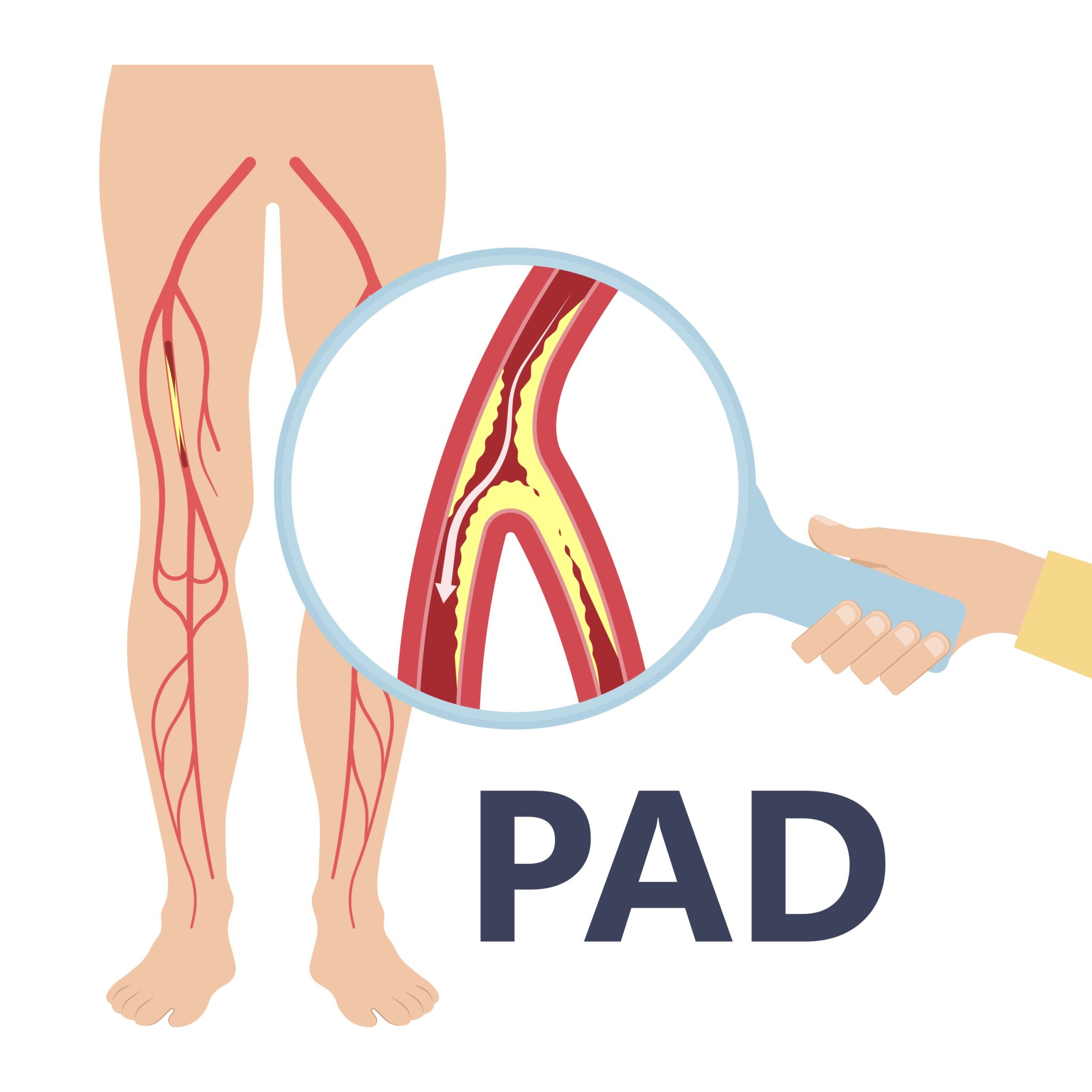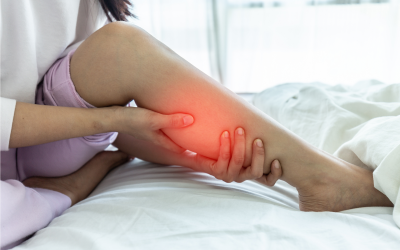Peripheral Artery Disease (PAD)

What Is Peripheral Artery Disease?
Understanding Peripheral Artery Disease
Peripheral arteries deliver oxygen-rich blood to the tissues outside the heart. As you age, your arteries become stiffer and thicker. In addition, risk factors, such as smoking and high cholesterol, can damage the artery lining. This allows a buildup of fat and other materials (plaque) to form within the artery walls.
The buildup of plaque narrows the space inside the artery and sometimes blocks blood flow. Peripheral arterial disease (PAD) happens when blood flow through the arteries is reduced because of plaque buildup. It often happens in the legs and feet, but can also happen elsewhere in the body. If this buildup happens in the large artery in the neck (carotid artery), it can lead to a stroke. But, if you’re aware of your risks, lifestyle changes can help with your symptoms.
A HEALTHY ARTERY
An artery is a muscular tube that carries oxygen-rich blood and nutrients from the heart to the rest of the body. It has a smooth lining and flexible walls that allow blood to pass freely. When active, muscles need more oxygen. This increases blood flow. Healthy arteries can adapt to meet this need.
A DAMAGED ARTERY
PAD starts when the lining of an artery is damaged. This is often because of risk factors, such as smoking, older age, or diabetes. Plaque then starts to form within the artery wall. At this stage, blood flows normally, so you’re not likely to have symptoms.
A NARROWED ARTERY
If plaque continues to build up, the space inside the artery narrows. The artery walls become less able to expand. The artery still provides enough blood and oxygen to your muscles during rest. But when you’re active, the increased demand for blood can’t be met. As a result, your leg may cramp or ache when you walk.
A BLOCKED ARTERY
An artery can become blocked by plaque or by a blood clot lodged in a narrowed section. When this happens, oxygen can’t reach the muscle below the blockage. Then you may feel pain when lying down or when you are not active (rest pain). This type of pain is especially common at night when you’re lying flat. In time, the affected tissue can die. This can lead to the loss of a toe or foot.
VASCULAR SURGEONS AT THE SURGICAL CLINIC

Dr. Julia Boll
Vascular Surgeon
VIEW PROFILE

Dr. JimBob Faulk
Vascular Surgeon
VIEW PROFILE

Dr. Brian Kendrick
Vascular Surgeon
VIEW PROFILE

Dr. Brian Kendrick
Vascular Surgeon
VIEW PROFILE

Dr. Billy J. Kim
Vascular Surgeon
VIEW PROFILE

Dr. Allen Lee
Vascular Surgeon
VIEW PROFILE

Dr. Caroline Nally
Vascular Surgeon
VIEW PROFILE

Dr. Elizabeth F. Nelson
Vascular Surgeon
VIEW PROFILE

Dr. Adam Richter
Vascular Surgeon
VIEW PROFILE

Dr. Mark Shelton
Vascular Surgeon
VIEW PROFILE
VASCULAR SURGERY ARTICLES
Top Docs at The Surgical Clinic
Celebrating The Surgical Clinic’s Top Docs...
Stroke Prevention: A Comprehensive Guide | B.F.A.S.T.
Strokes can be devastating, often leaving...
Vascular Surgery: How Vascular Conditions Are Diagnosed And Treated
Seeking clarity on vascular surgery how vascular...
Should You Get Screened for PAD?
Screenings are health check-ups done by doctors...
PAD Awareness: What You Need to Know
Most people know the dangers of heart attack and...
General & Vascular Surgery in Nashville, TN
General SurgeryTop 10 Most Common General...







